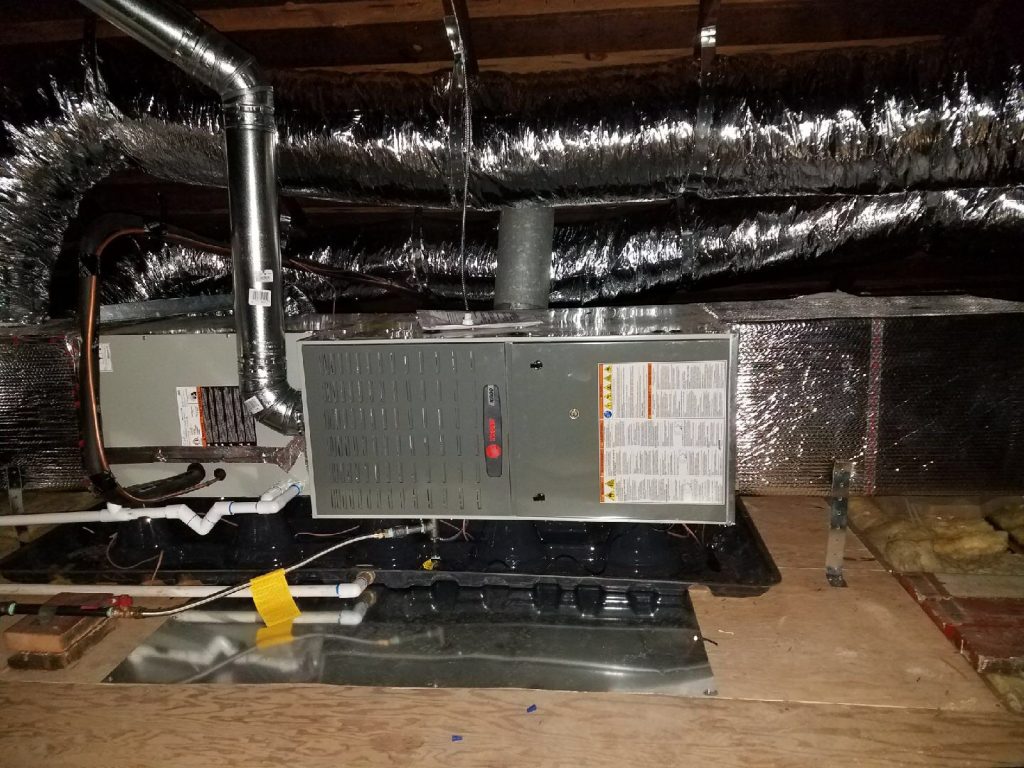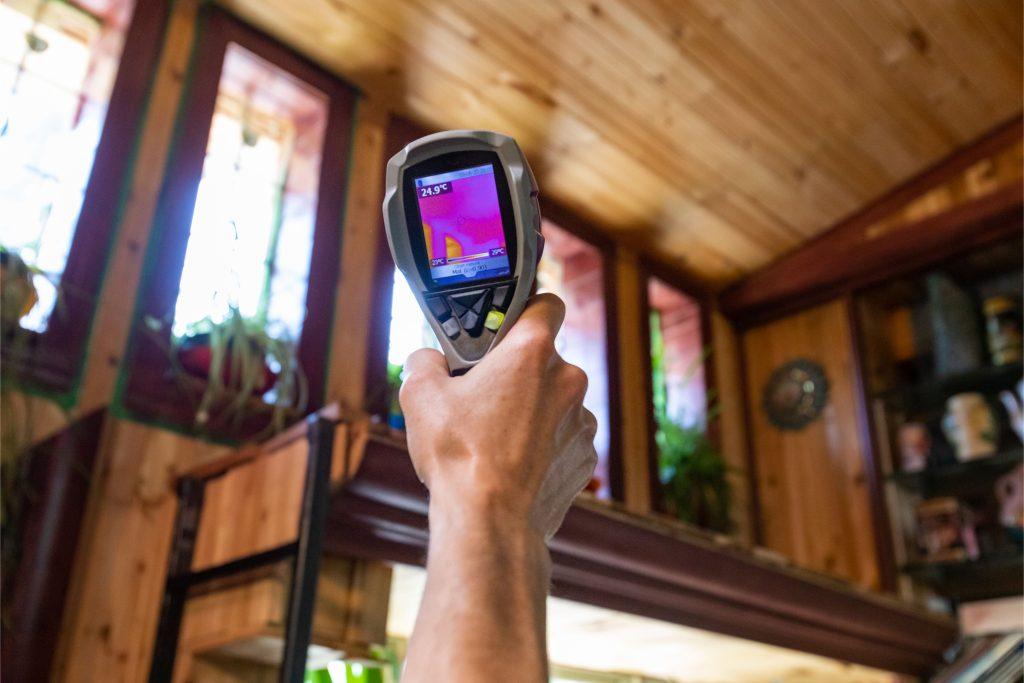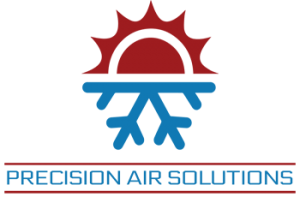- (707)-741-1993
- chris@precisionhvacco.com
- Serving Solano & Surrounding Counties
HVAC Installation Timeline: What to Expect
John is a busy homeowner in California. He has two jobs so that he can have a comfortable life. John has always wanted to change his old HVAC unit to improve the indoor air quality in his home. However, he is concerned about the HVAC installation timeline and how it will fit into his hectic schedule.
But the issue wasn’t about calling an HVAC technician to install a new HVAC system. He didn’t know how long the HVAC installation timeline would be. This got him worried considering his busy schedule.
If you’re thinking about how long your new HVAC installation will take, then this blog is for you. Join us as we show you all you need to know about installing a new HVAC unit and what affects the installation process timeline.
Are you ready? Let’s get started!
Key Highlights
-
Your HVAC is a complex system. This means you’ll need the help of an expert for a safe HVAC installation process. Understanding the HVAC installation timeline can help you plan accordingly and ensure a smooth setup.
-
A trustworthy HVAC company will accommodate your schedule to identify suitable installation dates and explain the HVAC installation timeline to you.
Understanding The Basics of HVAC Installation
Here’s something you should know: HVAC stands for heating, ventilation, and air conditioning. It’s a heating and cooling system that helps to keep you comfortable inside your home.
However, it’s also a complex system. This means that you’ll require the skills of an expert to properly install an HVAC system in your home. Understanding the HVAC installation timeline can help you plan ahead and ensure a smooth installation process.
Many people think an HVAC installation is just like plugging in new equipment or appliances in your home. However, that’s not the case. An HVAC system has different parts like a new air conditioner, furnace (if applicable), ductwork, and a new evaporator coil.
That’s not all. Modern HVAC systems now have smart thermostats, better AC units, and heater insulation parts. The HVAC installation timeline can vary depending on factors such as system complexity, home size, and necessary modifications to existing ductwork.
The process of installing a new system will require the technician to remove your old equipment and replace it with a new HVAC unit. They’ll connect it to your existing or new ductwork. As part of the HVAC installation timeline, they’ll also make sure that your electrical and refrigerant lines are installed the right way.
What is HVAC and why is it important?
An HVAC system helps to control the temperature and air quality in your home. It keeps you warm during the winter seasons. In the hot summers in California, it satisfies your cooling needs through your central air conditioner.
That’s just the tip of the iceberg. If you properly maintain your HVAC system, it can help to keep the airflow in your home healthy. Additionally, understanding the HVAC installation timeline ensures a smooth and efficient setup, helping you plan for any necessary adjustments in your home.
Your HVAC system doesn’t just move air throughout your home, it also filters out dust, allergens, and other pollutants. This helps you to enjoy good indoor air quality in your home. And guess what? If your HVAC unit is energy-efficient, it can help you reduce your energy costs over time. When planning for an HVAC installation, understanding the HVAC installation timeline is crucial to ensure the process goes smoothly and efficiently.
Types of HVAC systems that are common in California homes
It’s important to install the right HVAC system for your home, especially if you’re living in California, where the temperatures in some regions can vary significantly. Many homeowners in warmer areas use the central air system, often combining it with a furnace to enjoy better heating and cooling. Understanding the HVAC installation timeline can help you plan your project efficiently, ensuring you get the right system installed in a timely manner.
However, people who live in the milder regions prefer heat pumps. This is because they can transfer heat instead of generating it. That’s why they are energy-efficient and can keep your home warm and cool depending on your needs. When planning for installation, it’s important to consider the HVAC installation timeline to ensure everything runs smoothly.
There’s another option called ductless mini-splits. This type of system is used for homes without existing ductwork. It’s also a great choice if you want to combine the heating and cooling functions into a single outdoor unit.
If you want to get the best HVAC installation services, you need to call a reputable HVAC company. They’ll have expert technicians who will install the right system for your home’s heating and cooling needs.
The Beginner’s Guide to HVAC Installation Process

Now that you know the different types of HVAC systems, let’s show you what to expect on the installation day.
Of course, the installation process may vary based on the size and how complex your system is. However, a typical HVAC installation will follow a step-by-step process. To give you a better idea of what to expect, we’ll walk you through the typical HVAC installation timeline. Here’s a breakdown of what to expect:
Step 1: Initial consultation with an HVAC professional
Your HVAC installation process starts with meeting a reputable HVAC professional for consultation. At the beginning of your appointment, the HVAC technician evaluates your requirements while inspecting your home to help you make an informed decision.
The professional will assess your existing system and measure the size of your home. This helps them to know the right heating and cooling requirements your home needs. With this information, you can select a system that matches your requirements and financial capacity. Understanding the HVAC installation timeline is also crucial at this stage, as it helps you plan for the entire process, from system selection to installation completion.
When planning your HVAC installation, it’s essential to consult an experienced HVAC professional to ensure a safe and efficient installation process. You should seek recommendations from friends and family members for trusted referrals. Additionally, take the time to read reviews and find out what previous customers are saying about the company’s service. Checking whether they have all the necessary certifications is crucial for your peace of mind. A certified professional will provide you with quality HVAC installation services, helping you stay on track with the HVAC installation timeline.
Step 2: Home evaluation and system selection
The assessment of your home begins after the first appointment with the HVAC expert. The HVAC technician will calculate your home’s heating and cooling needs. During this process, the HVAC installation timeline will also be discussed, ensuring you understand the steps involved. The technician will inspect your insulation, along with your windows and climate zone. This will help them determine the right size of HVAC unit you’ll need.
The HVAC technician will provide you with a wide selection of new HVAC systems while showing you their advantages and disadvantages. A professional will demonstrate how SEER, HSPF, and AFUE ratings function and their significance to your system.
Selecting the right system will improve the comfort of your home and decrease your energy usage. The selection phase will include discussions about your ductwork and thermostat considerations.
Your new system installation will also require all other necessary components to be available. Don’t hesitate to ask questions before choosing from the available options.
Step 3: Scheduling and preparing for the installation day
You need to schedule the HVAC system installation date after selecting your new system. A trustworthy HVAC company will accommodate your schedule to identify suitable installation dates and explain the HVAC installation timeline to you.
You should dedicate time to preparing your house before the installation date. You need to clear all pathways and eliminate all obstacles from the installation zones. Inform the installation crew about any hazards or particular needs in your home.
The right preparation before installation reduces the complexity of the installation process. A quick and efficient installation occurs when you move furniture from vents and protect your valuable items. This ensures easy access to your electrical panels and utility connections.
Step 4: The installation process explained
During installation day, the HVAC technician brings their equipment to remove your current system before installing your new unit. The technician will position the new HVAC unit with precision before securing it properly to maintain stability.
They will establish airtight ductwork connections between your existing or new ductwork system and the new HVAC unit to prevent energy loss. During this process, the technician follows the HVAC installation timeline to ensure that each step is completed efficiently.
The technician will take care of all electrical wiring, including your refrigerant lines. They’ll follow California’s strict safety protocols and building codes while installing your system.
A professional technician will also perform a complete system testing after the connections. They’ll calibrate the thermostat, check the airflow, and verify your refrigerant levels to ensure your system is working properly.
Step 5: Post-installation checkup and maintenance tips

The HVAC technician will show you how to operate the new system by demonstrating how to use the thermostat. They will highlight all the system’s special features after the installation is completed.
The technician will demonstrate regular maintenance duties including air filter replacement and professional maintenance checks. This helps to maintain the peak performance of your new system.
Before ending the session ask questions about operating the new system and schedule maintenance appointments for the future. Thorough HVAC system maintenance extends its lifespan, boosts its energy performance, and reduces unexpected equipment failures.
Get a fresh look at your monthly utility expenses afterward to check how well your energy efficiency has been enhanced through the installation.
You will notice that your home’s comfort level and energy usage have visibly improved. This is because your HVAC system was installed properly.
Factors Affecting HVAC Installation Timeline
The installation duration of HVAC systems depends on multiple elements. For instance, the complexity and size of the HVAC system being installed is a factor. The state of your current ductwork and electrical system can affect the HVAC installation timeline. This also includes any required ductwork replacement or modification tasks. Here’s a proper explanation to keep you informed:
Size and complexity of the HVAC system
Naturally, the size of the unit impacts installation time. For instance, larger and more powerful central air conditioners will require more time to install than smaller units. This is because they have heavier components and more complex connections. Understanding the HVAC installation timeline can help you plan accordingly, as this factor varies depending on the complexity of the system being installed.
A straightforward swap of an old unit with a new one of the same size and configuration in the same location will generally require less time.
Especially, if you compare it to a more complex installation. One that involves moving the unit’s location, adding new ductwork, or installing a zoning system to control the temperature.
The condition of your existing ductwork and electrical systems
Your existing ductwork condition determines how much time your HVAC installation needs to complete. The HVAC installation timeline will increase if you have old or damaged ductwork. Especially, if it does not match the new HVAC system size, requires repairs, or even replacement.
If your electrical system needs to be upgraded because of your HVAC’s capacity, your installation timeline will likely increase.
A proper inspection of your insulation system is essential for your project. Your new HVAC system will not work properly if your insulation is poor. This is because energy will escape through the system.
Reach Out to Us!
If you’re looking for a reliable local HVAC technician in California, United States, then Precision HVAC is the right choice for you. Our HVAC professionals have the necessary certifications and skills to give you quality installation services.
We can also help if you need HVAC repairs and maintenance. And guess what? All our services are fast and affordable. Reach out to us today!
Frequently Asked Questions
What is the typical HVAC installation timeline?
The HVAC installation timeline can vary depending on factors like the system’s size, complexity, and the condition of your existing ductwork. Generally, a straightforward installation can take one to two days, while more complex installations might require additional time.
How does the complexity of the HVAC system affect the installation timeline?
The size and complexity of the HVAC system play a significant role in determining the HVAC installation timeline. Larger systems, such as central air conditioners with added ductwork, may require more time to install compared to simpler systems.
Can the condition of existing ductwork impact the HVAC installation timeline?
Yes, the condition of your current ductwork can greatly impact the HVAC installation timeline. If your ducts are outdated or damaged, the technician may need to repair or replace them, which can extend the installation time.
How long does it take to install an HVAC system if the ductwork needs to be replaced?
If your ductwork needs replacement, the HVAC installation timeline could increase. Typically, replacing ductwork adds extra time to the process, potentially extending the timeline by a few days depending on the extent of the replacement.
Will I be able to plan my schedule around the HVAC installation timeline?
A reputable HVAC company will work with you to accommodate your schedule and clearly explain the HVAC installation timeline. With proper planning, you can ensure minimal disruption to your daily routine.
